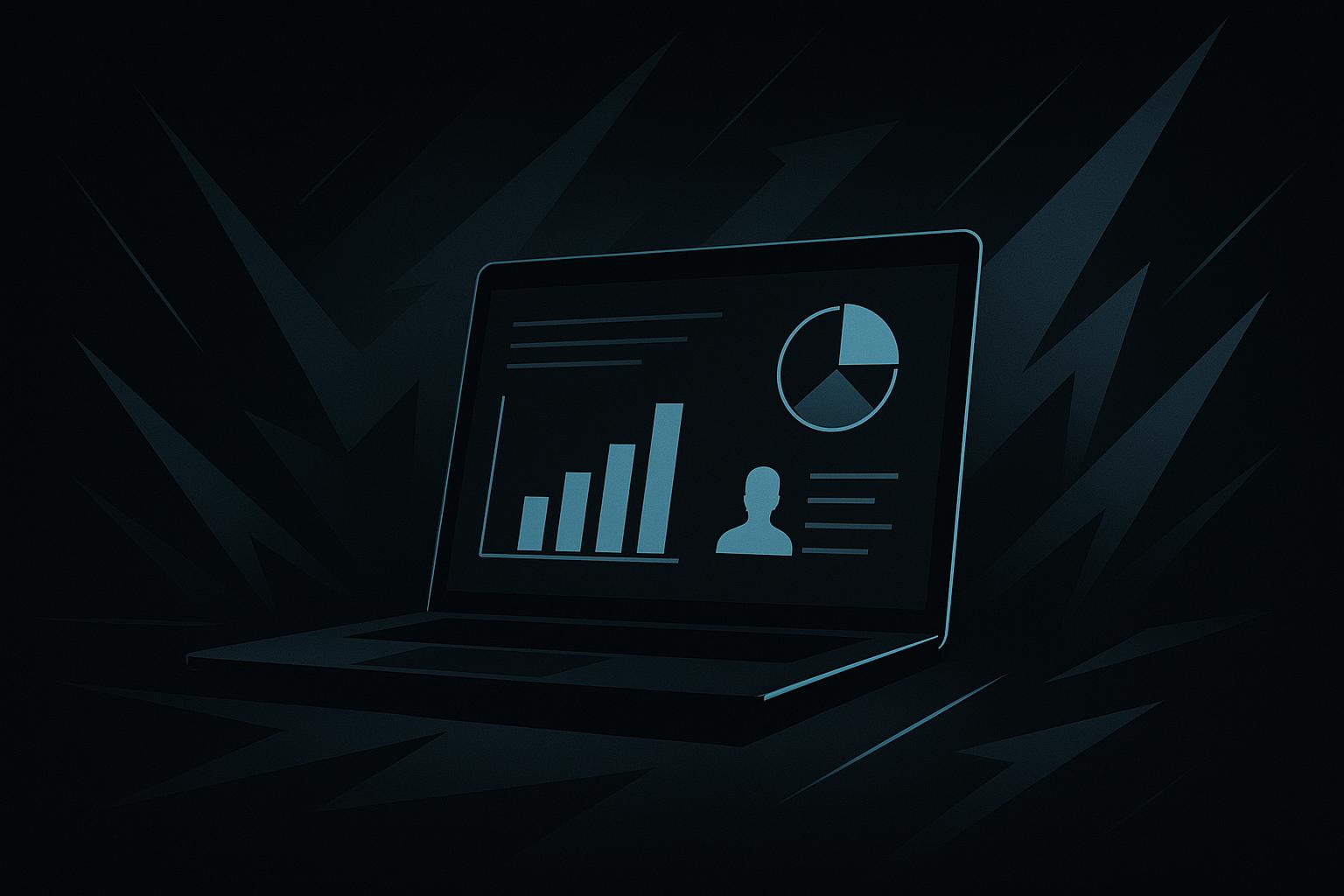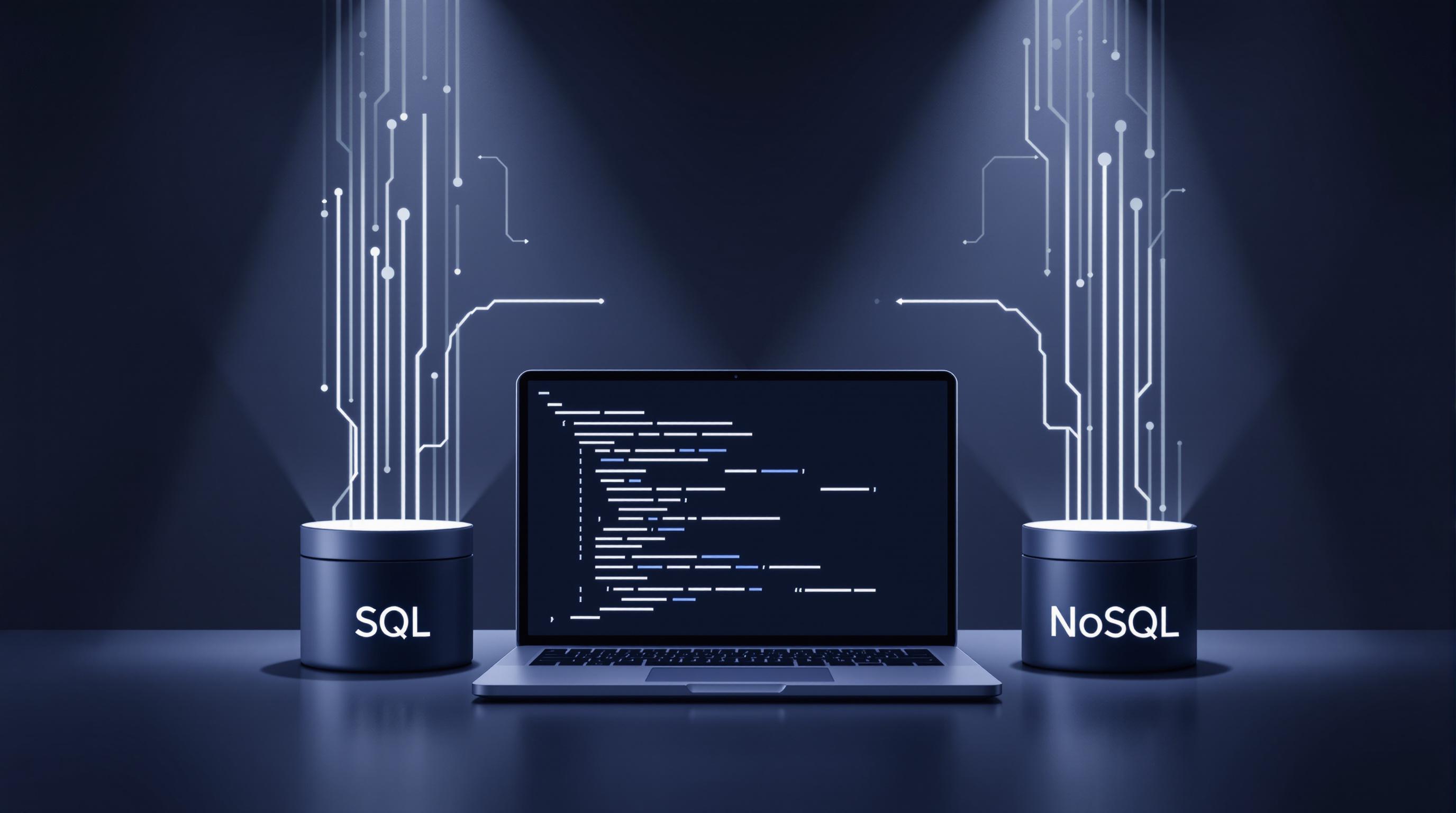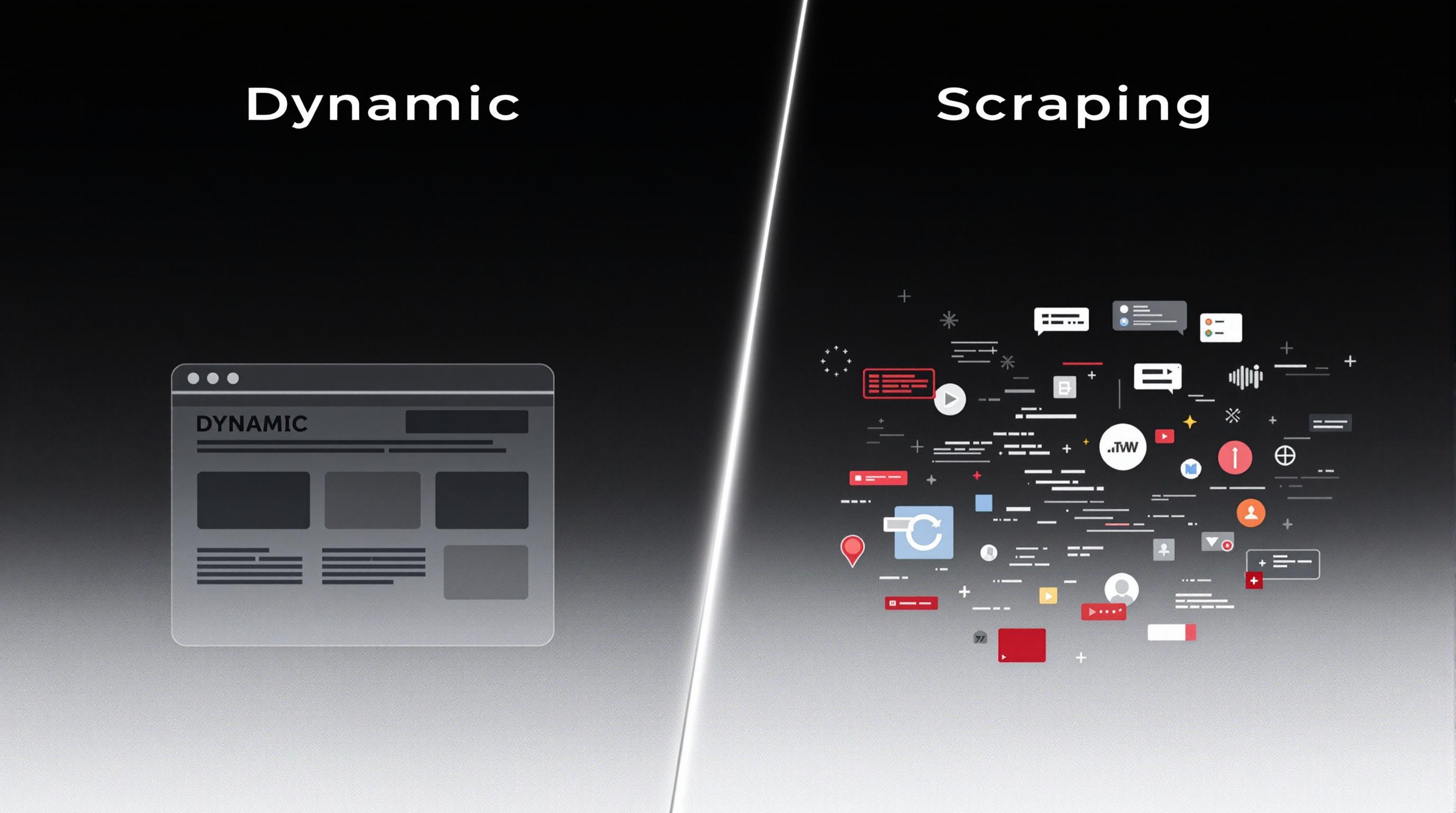Web scraping and big data are transforming how businesses collect and analyze information. By combining automated data collection with large-scale analytics, companies can make faster, smarter decisions. Here’s what you need to know:
- Big Data: Analyzes massive datasets from sources like social media, IoT, and online transactions to uncover patterns and insights.
- Web Scraping: Automates data collection from websites, saving time and reducing costs.
- How They Work Together: Web scraping feeds big data systems with real-time, structured data, enabling dynamic pricing, market trend analysis, and AI training.
Key Applications:
- Market Research: Track competitors, pricing, and consumer preferences.
- AI Training: Provide diverse datasets for machine learning models.
- Competitor Monitoring: Continuously gather data on pricing, product launches, and customer sentiment.
Challenges and Best Practices:
- Stay ethical by adhering to legal guidelines (e.g., GDPR, CCPA).
- Use tools like Selenium, Puppeteer, and AI-driven platforms to handle dynamic content and compliance.
Trends to Watch:
- Real-time data processing for instant decision-making.
- AI-powered tools for smarter, more reliable scraping.
- Evolving regulations shaping data collection practices.
Quick Comparison:
| Aspect | Big Data | Web Scraping |
|---|---|---|
| Purpose | Analyzing large datasets | Collecting data from websites |
| Key Tools | Hadoop, Spark | Selenium, Scrapy, Puppeteer |
| Challenges | Data integration, storage | Dynamic content, CAPTCHAs, IP bans |
| Applications | AI, analytics, decision-making | Market research, competitor tracking |
Together, these technologies help businesses stay competitive by turning raw data into actionable insights. Use them responsibly and efficiently for maximum impact.
Industrial-scale Web Scraping with AI & Proxy Networks
Uses of Web Scraping in Big Data
Web scraping plays a key role for organizations tapping into big data analytics. By automating the collection of data from various online sources, businesses can gather insights and make informed decisions faster.
Market Research and Consumer Data
Web scraping allows businesses to analyze market trends in real-time. It helps extract information on consumer preferences, pricing patterns, and market shifts from platforms like e-commerce websites, social networks, and review sites.
Take the hospitality industry, for example. Hotels use web scraping to track competitor data such as room prices, amenities, and guest reviews across travel platforms. This information feeds into their analytics systems, helping them fine-tune pricing and improve services. Such data-driven strategies help businesses adapt and thrive in competitive markets.
Training AI and Machine Learning Models
AI and machine learning models rely on diverse datasets for training. Web scraping provides the raw data needed for tasks like language processing or image recognition. For example, LinkedIn uses data from job postings and market trends to enhance its AI algorithms, improving job recommendations and user engagement.
Monitoring Competitors Automatically
Web scraping tools make it easier for businesses to keep an eye on competitors in fast-moving markets. These tools gather data continuously, providing insights in areas such as:
| Tracking Area | Data Collected | Business Impact |
|---|---|---|
| Pricing Strategy | Pricing updates, promotions | Helps adjust pricing dynamically |
| Product Portfolio | New launches, product updates | Guides product development decisions |
| Customer Sentiment | Reviews, social media mentions | Improves customer experience strategies |
By integrating scraped data with big data analytics, companies can process massive datasets and uncover actionable insights quickly. This is especially important in markets where swift decisions can lead to a competitive edge.
Although web scraping offers powerful advantages, it’s essential to use it responsibly, adhering to ethical and legal standards.
Best Practices for Web Scraping
Staying Ethical and Legal
Web scraping comes with responsibilities, especially when working with large-scale data collection. It's essential to follow legal guidelines and act ethically to avoid potential issues. Always secure the necessary permissions and handle data with care to stay compliant.
| Compliance Area | Best Practice | Implementation |
|---|---|---|
| Data Privacy | Use secure storage | Encrypt sensitive data and restrict access |
| Terms of Service | Follow guidelines | Review site policies and obtain permissions |
| Rate Limiting | Avoid overloading servers | Add 5-10 second delays between requests |
| Data Attribution | Keep source information | Maintain metadata for all collected content |
Following these practices isn't just about legality - it also helps maintain trust and ensures smoother operations. But compliance is just one part of the equation; technical obstacles also play a big role in web scraping.
Overcoming Technical Challenges
Web scraping often involves tackling issues like dynamic content, CAPTCHAs, and IP restrictions. Tools such as Selenium or Puppeteer can handle JavaScript-heavy pages, while services like Oxylabs use rotating proxies to avoid detection and ensure uninterrupted data collection.
These tools are essential for navigating technical barriers, but many organizations are now stepping up their game with AI-driven solutions.
Using AI Tools for Web Scraping
AI-powered tools are transforming the way web scraping is done. Platforms like InstantAPI.ai can quickly adjust to changes in website structures, automate data extraction, and process information in real-time. This makes it easier to scale operations and maintain reliability.
To get the most out of AI tools, focus on data accuracy. Regularly validate and update your scraping processes to ensure the information you collect remains useful for analytics and other applications.
sbb-itb-f2fbbd7
Trends in Big Data and Web Scraping
Real-Time Data Processing
The need for real-time web scraping is growing fast, especially in industries where immediate insights are critical. For example, financial institutions depend on instant data extraction to track market changes and make quick trading decisions. Similarly, e-commerce platforms use real-time pricing data to stay competitive around the clock.
Tools like Scrapy and Selenium now support real-time data streams, allowing businesses to process massive amounts of data in seconds. These tools make it possible to handle thousands of data points simultaneously.
| Industry | Application | Impact |
|---|---|---|
| Finance | Monitoring market trends | Faster, more accurate trading decisions |
| E-commerce | Dynamic pricing | Always maintaining competitive prices |
| Travel | Inventory management | Real-time optimization for bookings |
While real-time processing boosts efficiency, it also brings challenges, particularly with evolving regulations that govern how data is collected and used.
Changing Regulations
As regulations like GDPR and CCPA reshape the data landscape, modern tools have adapted by integrating features like data anonymization and transparent collection methods. For instance, InstantAPI.ai has built-in compliance features that simplify data collection while adhering to legal requirements.
These changes have pushed the development of AI-driven tools, which are now essential for balancing compliance with effective data extraction. These tools make it easier to meet legal standards without compromising performance.
AI and Automation in Web Scraping
AI has transformed web scraping by automating complex tasks, handling website changes, and organizing unstructured data with precision. Machine learning algorithms have significantly improved accuracy, with AI tools now achieving up to 99% accuracy, compared to traditional methods that average around 85%.
Businesses using these advanced tools are seeing major gains in efficiency. For example, financial firms can now process market data from thousands of sources in milliseconds, providing them with the insights needed for smarter investment decisions. AI is not just improving speed - it's also making data collection smarter and more reliable.
Conclusion
Key Takeaways
Web scraping combined with big data integration allows businesses to gather and analyze massive online datasets with precision and compliance. Advanced tools and technologies make it possible to process data at larger scales while ensuring accuracy.
AI-powered tools have revolutionized how data is extracted, offering greater automation and precision. For instance, Dataox showcased the power of integrated scraping solutions by cutting data collection costs by 60%, all while delivering high-quality insights to their clients.
Here are some trends shaping the field:
| Aspect | Impact | Future Outlook |
|---|---|---|
| Real-Time Processing | Enables instant market analysis and dynamic pricing | Demand for this capability will grow |
| Regulatory Compliance | Improves data privacy and ethical practices | Expect stricter regulations ahead |
| AI Integration | Enhances automation and precision | More advanced tools are on the horizon |
As technology advances, businesses need to adjust their strategies to take full advantage of these tools while addressing challenges like compliance and scalability. The future of web scraping in big data analytics is bright, with AI-driven tools like InstantAPI.ai playing a key role in simplifying complex tasks and ensuring compliance with data protection standards.
Modern platforms now offer features such as automatic updates and premium proxies, ensuring reliable and compliant data extraction. To stay ahead in the data-driven world, companies must adopt tools that strike a balance between efficiency and compliance, helping them maintain their competitive edge.
FAQs
What is large-scale web scraping?
Large-scale web scraping automates the process of gathering and processing data from multiple websites at the same time. Unlike traditional methods, which are slow and require manual effort, this approach collects data quickly and at scale. It allows organizations to handle billions of data points efficiently, making it ideal for tasks like market research or training AI models.
This method plays a key role in big data integration by delivering raw, real-time datasets needed for advanced analytics. Here's a quick comparison with traditional data collection:
| Aspect | Traditional Collection | Large-Scale Scraping |
|---|---|---|
| Data Volume | Hundreds to thousands of entries | Millions to billions of data points |
| Processing Speed | Days to weeks | Hours to minutes |
| Cost Efficiency | $50-100 per hour for manual work | $0.1-0.5 per thousand requests |
To achieve success with large-scale scraping, organizations should focus on a few key technical strategies:
- Use distributed systems and rate limiting: Spread scraping tasks across multiple servers and adjust request rates to improve efficiency.
- Ensure data quality: Automate data validation and cleaning to maintain accuracy.
Platforms like Bright Data highlight that using distributed systems and rotating proxies can boost scraping success rates by up to 95% while cutting server load by 60%. Additionally, AI-powered tools simplify complex tasks and help ensure compliance with data regulations. These strategies make large-scale web scraping a powerful tool for applications such as market analysis and building AI models.


